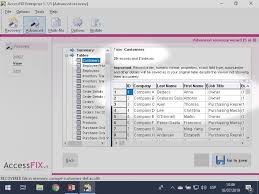I. Introduction
It may seem like a daunting task to reset your laptop, particularly if you’re concerned about losing important documents, files, or pictures. The reality is that contemporary laptops, running either Windows or macOS, come with built-in tools that let you reset the system without erasing your personal information. 2025 makes it entirely possible to reset your device without losing any data, whether you’re attempting to resolve performance problems, get rid of obstinate malware, or just give it a new lease on life. With the help of this straightforward guide, you can update your laptop with confidence and security.
We’ll go over various reset techniques, what to anticipate, and how to ensure that your files are unaltered. You’ll end up with a laptop that is cleaner and performs better without compromising your priceless data.
II. Why You Might Want to Reset Your Laptop
Even though it may seem like a last resort, there are a number of reasons why restarting your laptop could be the best course of action. Cluttered files, leftover software, or corrupted system settings can cause laptops to lag over time. You may experience lag when working, longer boot times, or more frequent app crashes. These hidden problems can be removed with a reset that doesn’t impact your personal files. It’s also beneficial if your system has become unstable due to malware or bugs, or if you want a fresh start after installing a lot of apps over the years.

Resetting your laptop before selling or giving it away is sometimes necessary to protect the privacy of your data. The finest aspect? You can give your laptop a new start while preserving what’s important by using the correct technique to erase everything but your files. It’s similar to a thorough purification without wiping out your memories.
III. What Happens When You Reset Your Laptop Without Deleting Files
Your operating system reinstalls itself to a brand-new, factory-like state when you reset your laptop using the “Keep my files” option, but your personal data is left intact. This implies that all of the saved files in your user folders, including documents, images, and videos, are still there. All installed apps and programs, with the exception of those that were pre-installed on your laptop, will be deleted, though. Additionally, your system settings will be returned to their initial configuration, which may resolve performance problems brought on by incorrect setups.
In essence, it’s similar to moving into a newly cleaned home with all of your belongings (files) still there but new walls, floors, and fixtures (system software). Remember that you may need to change some settings and reinstall third-party apps. This procedure is a secure way to protect your important files and give your laptop a fresh start.
IV. Precautionary Steps Before Resetting
It’s vital to take a few precautions before resetting your laptop to make sure nothing crucial is forgotten or lost. Even if you select the “Keep my files” option, you should first backup all important files because unforeseen issues during the reset could still result in data loss. Keep backups on a cloud service or external drive. Secondly, compile a list of all the software and programs you use, along with their login credentials or license keys, so you can easily reinstall them later.
Third, to prevent inadvertent formatting, unplug superfluous peripherals such as USB devices, printers, and external hard drives. Sync your settings, passwords, and bookmarks with your account if you use browser-based services or email. Finally, to avoid disruptions in the middle of a task, make sure your laptop is connected to a dependable power source. Your reset will go more smoothly, safely, and stress-free if you follow these steps.
V. How to Reset Your Laptop Without Losing Files (Windows 10/11)
Both Windows 10 and 11 make it simple to reset your laptop without erasing your files. Take these actions:

A. Using Windows Settings
The built-in Windows Settings are the simplest way to reset your laptop without erasing any data. Here’s how to do it:
Open the Settings Menu – Press Windows + I to quickly open Settings.
Navigate to Recovery Options –
- For Windows 10: Go to Update & Security > Recovery.
- For Windows 11: Go to System > Recovery.
Start the Reset Process – Under Reset this PC, click Get started.
Select “Keep My Files” – This option ensures your personal files, like photos and documents, remain untouched while removing apps and restoring default settings.
Choose Reinstallation Method –
- Cloud Download: Downloads fresh system files from Microsoft.
- Local Reinstall: Uses existing system files on your laptop.
Confirm & Reset – Review the changes and click Reset to begin.
B. Using Advanced Startup (If Windows Won’t Boot)
You can still use Advanced Startup to reset your laptop without erasing any data if it is unable to start up normally. Here’s how:
- Access Advanced Startup –
- If your PC fails to boot, it will often show the Automatic Repair screen.
- If not, turn your laptop on and off three times using the power button until Advanced Startup appears.
- Choose Troubleshoot – From the menu, select Troubleshoot.
- Select Reset This PC – Click Reset this PC to start the process.
- Pick “Keep My Files” – This ensures your personal data is safe while system settings and apps are refreshed.
- Choose Reinstallation Method –
- Cloud Download: Downloads fresh Windows files.
- Local Reinstall: Uses files stored on your laptop.
- Confirm & Reset – Follow the prompts, and your laptop will reset even without normal boot access.
This method is a lifesaver when Windows won’t start but you still need to keep your files intact.
C. Using Recovery Drive (Optional Advanced Method)
Even if Windows is totally unresponsive, you can reset your laptop without erasing any data if you’ve already made a USB recovery drive. Although more sophisticated, this approach is very dependable.
- Insert the Recovery Drive – Plug the prepared USB recovery drive into your laptop.
- Boot from USB – Restart your laptop and press the correct boot menu key (often F12, F9, or Esc, depending on the brand). Select your USB drive.
- Choose Keyboard Layout – After booting, pick your preferred keyboard layout.
- Select Troubleshoot – Click Troubleshoot from the recovery menu.
- Choose Reset This PC – Select Reset this PC.
- Click Keep My Files – This keeps personal data intact while refreshing Windows.
- Follow the Prompts – The recovery drive will reinstall Windows using stored recovery files.
Making a recovery drive now can save you trouble later because it serves as your laptop’s “lifeboat,” allowing you to fix or reset it whenever you want.
VI. How to Reset a macOS Laptop Without Losing Files
A. Using macOS Recovery
The built-in tool macOS Recovery allows MacBook users to reset their devices without erasing crucial data. After restarting your Mac, press and hold Command (⌘) + R until the Apple logo appears. Choose Reinstall macOS from the Utilities window after you’re in Recovery Mode. This option is ideal for resolving system issues without erasing everything because it reinstalls the operating system while preserving your personal information and applications. Because the installer downloads macOS from Apple’s servers, make sure your internet connection is steady.
It might take a while, but once it’s finished, your Mac will feel refreshed and your files will be secure. This is the best way to fix software bugs or performance problems without doing a complete factory reset.
B. Important Notes for Mac Users
It’s crucial to comprehend a few crucial details when resetting a MacBook without erasing any files. First off, reinstalling macOS in recovery mode preserves your apps, documents, and images, but it replaces system files, which means that any system-level customizations might be lost. Second, in case something goes wrong, always make a backup using Time Machine before beginning. Third, to prevent disruptions while installing, make sure your Mac is connected to a power source.

Finally, keep in mind that hardware issues like bad batteries or damaged storage cannot be resolved by resetting. Additionally, the startup key combinations may differ slightly depending on whether your Mac is running an Intel chip or an Apple Silicon chip. You can successfully reset your Mac while preserving all of your important data if you take these precautions.
VII. What to Expect After the Reset
You’ll notice that your laptop feels almost brand new after the reset is finished. Since you selected to preserve files, your saved data, personal documents, and images should remain intact even though the operating system will be returned to its original configuration. You will have to manually reinstall any apps that weren’t pre-installed on your device because they will be deleted. Additionally, system settings like custom preferences, Wi-Fi passwords, and wallpapers might be returned to their original settings.
If the reset fixed software problems, you can anticipate improved performance, fewer errors, and possibly quicker boot times. Your system will be cleaner and more responsive after some background processes and bloatware that were slowing it down are removed. Just keep in mind that for the best stability and security, you should update your operating system and drivers as soon as possible after the reset.
VIII. Common Problems & Fixes
You may experience some glitches even if you reset your laptop without erasing any data. One frequent problem is that the reset process becomes stuck; this is usually resolved by restarting the laptop and attempting again, ideally after unplugging any external devices. Check to see if your files are still in the Windows.old folder. Another issue is that some files or settings are not being preserved as intended.
Sometimes, post-reset, drivers may be missing, causing issues with Wi-Fi, sound, or graphics—updating drivers through Device Manager or your manufacturer’s website usually solves this. If Windows still runs slowly after a reset, it could be due to hardware limitations rather than software, meaning an upgrade (RAM or SSD) might be needed. Finally, activation problems can occur—ensure your device is connected to the internet so Windows or macOS can verify your license automatically. A reset fixes most software issues, but knowing these quick fixes will save you time and stress.
IX. Bonus Tips
Use these additional suggestions to get the most out of your laptop reset and maintain its functionality. First, to avoid bloatware slowing down again after the reset, install only the apps that are absolutely necessary. Second, to prevent performance problems, make sure your operating system and drivers are updated on a regular basis. Third, utilize built-in utilities to automatically remove unnecessary files, such as Storage Sense (Windows) or Optimize Storage (macOS). Fourth, make sure you have a regular backup system in place, such as an external drive or cloud storage, so you’re ready in case you need to reset. Fifth, to speed up boot times, keep an eye on your startup apps and turn off any that aren’t needed.
Installing a lightweight antivirus program is another option if you want protection without sacrificing speed. Lastly, learn how to maintain your device by cleaning your keyboard, keeping dust out of vents, and not overcharging your battery. Long after a reset, you can maintain the best possible condition for your laptop by following these simple steps.
X. FAQs
- Will all of my files be erased if I reset my laptop?
Apps and settings will be deleted if you select the “Keep my files” option, but your personal files will stay. - Is it possible to reset my laptop without a password?
Yes, you can use a recovery drive or Advanced Startup, but you might need your Apple ID or Microsoft login information. - How much time does it take to reset a laptop?
Depending on your hardware and the reset technique, it typically takes between thirty minutes and two hours. - Does resetting require an internet connection?
Downloading system files might be necessary for some resets, but not always. - Will performance be enhanced by resetting?
Yes, it frequently speeds up your laptop by eliminating malware, faulty settings, and superfluous apps. - Can I halt a reset once it has begun?
No—system errors may result from interruptions. Always take a backup before beginning.
XI. Conclusion
A safe and efficient method to update your system, resolve performance problems, and get rid of troublesome apps or settings on your laptop without losing any data is to reset it without erasing any important documents, pictures, or personal information. The important thing is to use the right procedure and take preventative measures, such as making backups and making sure your device has enough power while doing so, whether you’re using Windows or macOS.
Imagine it as giving your laptop a “new beginning” without erasing the most important data. If done correctly, it can restore your laptop’s speed, stability, and dependability, making it feel nearly brand new. By 2025, anyone can perform a reset without expert assistance thanks to increasingly user-friendly built-in recovery tools. Just keep in mind that during the process, preparation and patience are your best friends. After that, if you keep your system clean, you’ll experience months of seamless operation.
XII. Call to Action
Now is the ideal moment to reset your laptop without jeopardizing your important files if it has been lagging, malfunctioning, or feeling cluttered. In just a few clicks, revive your device by following the detailed instructions above and getting your backups ready. Take action now to enjoy a faster, cleaner, and more dependable laptop experience rather than waiting for minor issues to grow into major ones.
Please forward this guide to friends and family if you think they could use it as well. Stay ahead of tech problems before they slow you down by reading other articles on ZubairTechLab for more laptop advice, buying guides, and troubleshooting tricks. Give your laptop the makeover it deserves right now!
